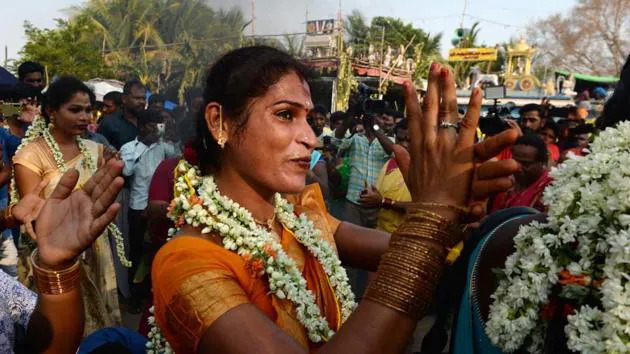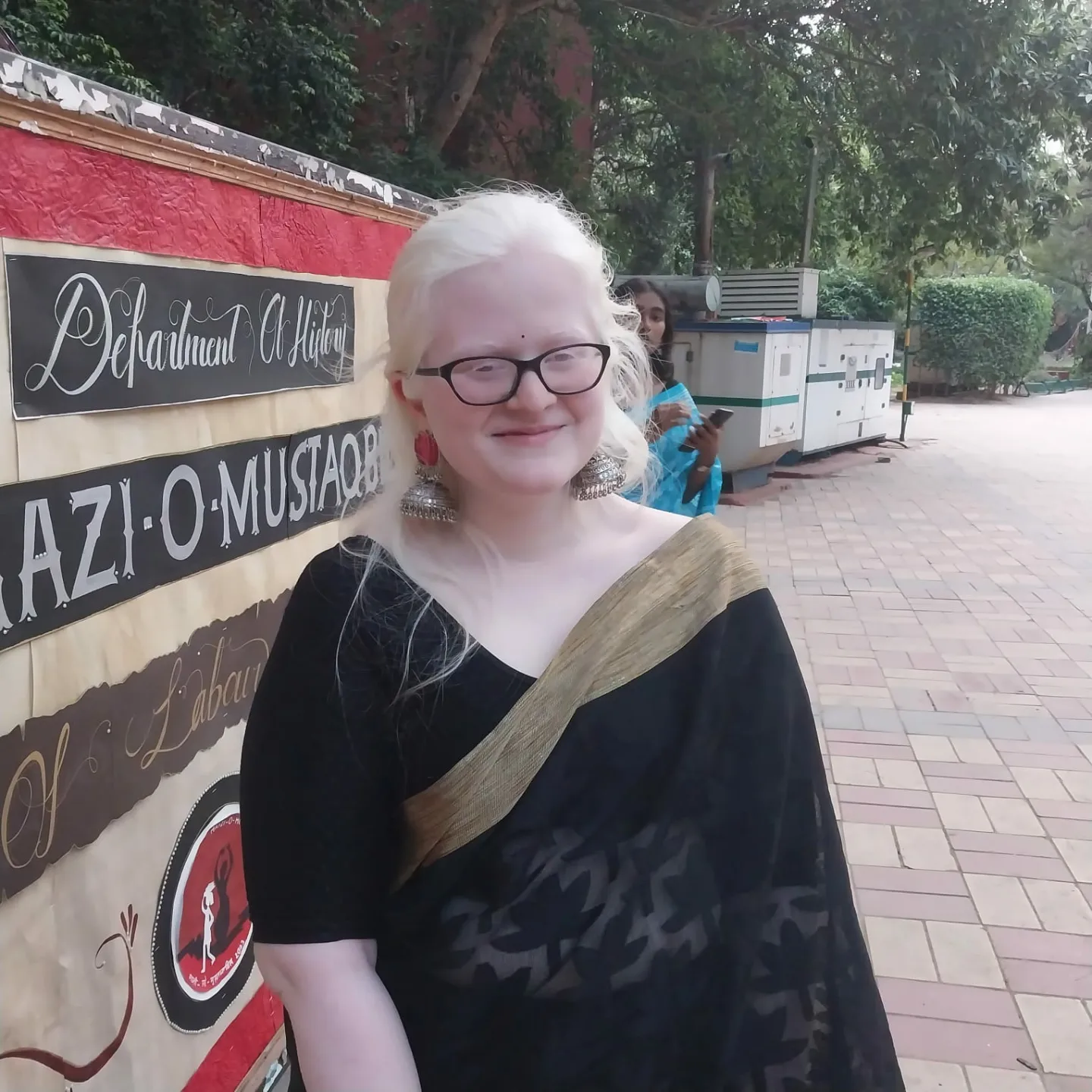
Of Celebrations and Subversions: The Kudhandavar-Aravan Festival of Tamil Nadu
The dreary town of Koovagam, Tamil Nadu is steeped in slumber throughout the year. On one night, in the months of April-May, this haze of history is lifted to reveal a hamlet in celebration. Dimly-lit streets are brightened by reds, oranges and yellows of glittering silk sarees and shimmering gold jimikkis. The fragrance of freshly plucked malikkai poo abounds in nooks shrouded in dust. Claps and cheers as well as the popular tracks from Tamil movies replace pervasive silences. The roads are occupied by transgender brides enroute to marry Lord Aravan.

Launch of The Legend
The trans community in India derives its ancestry from Mohini- an avatar of Lord Krishna. The myth, as recited in several versions of the Mahabharata, speaks of Aravan, a son of Arjuna. In order to win the Battle of Kurukshetra, Lord Krishna advised the Pandavas to sacrifice a warrior of pure blood. Aravan volunteered to give up on his life for the cause of his father and uncles but on one condition- he would be married before his death. Despite a grand search however, no woman agreed to marry a man who was doomed to death. Lord Krishna thus, transformed into the beautiful damsel Mohini and married Aravan for one night. The next day, Aravan was sacrificed and Mohini, his widow, grieved his loss. The marriage and subsequent death of Lord Aravan is commemorated every year during the Koothandavar-Aravan festival in Koovagam.
Of Glory and Gala
Traditionally celebrated over eighteen days, the trans community plays an important role in the Koothandavar-Aravan festival. The last two days, perhaps the most important, bring together trans people from across the country. The festivities commence with the celebration of Miss. Koovagam contest. Bedecked in jewellery and fancy clothing, participants walk on a fashion runway. The competition that may be dismissed by some for its frivolity, is a matter of great pride and self-esteem for the community. The real celebration however, commences the next day. Dressed as brides, almost twenty-thousand trans people flock to the temple of Aravan, in line to marry the Lord. Their necks are adorned with talis (mangalsutra or marriage threads) and by the end of the night, each one of them is a newly-wed bride.
Once the rituals are finished with, the frolic begins. The night is long and it is going to be filled with dance, music and sex. Free from the confines of society, the community makes merry and pleasures itself. As morning dawns however, the atmosphere becomes more sombre for the newly wed brides are to be widowed.
Large crowds gather outside the temple as an efigy of Lord Aravan is carried to an open ground where, much like in the legend, the statue will be set ablaze. The moving procession is thronged by thousands of people, reaching for the flowers that fall off the body of Lord Aravan. Each devotee looks keenly upon the idol, praying for joy and prosperity. In front of the statue, the traditional kummi dance is performed. The mood of the gathering however, is in complete contrast to the blessings they seek. As the talis are cut and the vermillion rubbed off their foreheads, the wives weep in despair. Their hair, undone, falls in knots over their faces as they wail and beat their chests. The festival, and the transient joy of these brides, has come to a close.
Beyond Boundaries
The significance of the Aravan festival is much greater than its ritual importance. For the trans community, it is an attempt to find a space within systems that have traditionally oppressed them. The festival is a medium of seeking legitimacy and validating one’s existence.
The celebrations however, are not carried out unperturbed. Even as participants walk down the streets, they are followed by the lustful eyes of men. As Tanuja, a transwoman from Germany, speaking to 101 India says, trans people are looked at as if they are “candy” because the men around them have never been taught to normalise queerness as well as respect women’s bodies. Tanuja also rightly points out that change must stem from the behaviour of men instead of popularising prescriptions that attempt to police women’s bodies.
The Koothandavar-Aravan festival provides a boost to the local economy. Vendors occupy the streets, selling aromatic flowers, saris, bangles and jewellery. More recently, the celebrations have been accompanied by HIV-AID camps as well as protests for the provision of jobs to trans people.
The festival additionally, allows the trans community to revel in their femininity. Forced to suppress their true identities by convention, the community finds relief in the streets of Koovagam. They arrive in large buses, accompanied by their sons and daughters, trans people adopted through the practice of jammat.
Conclusion
The trans community, subjected to constant discrimination and harassment in the Indian subcontinent, finds acceptance in a small Tamil village. They forge families and communities, giving voice to their innate desires, under the protection of a subversive deity.
Author

